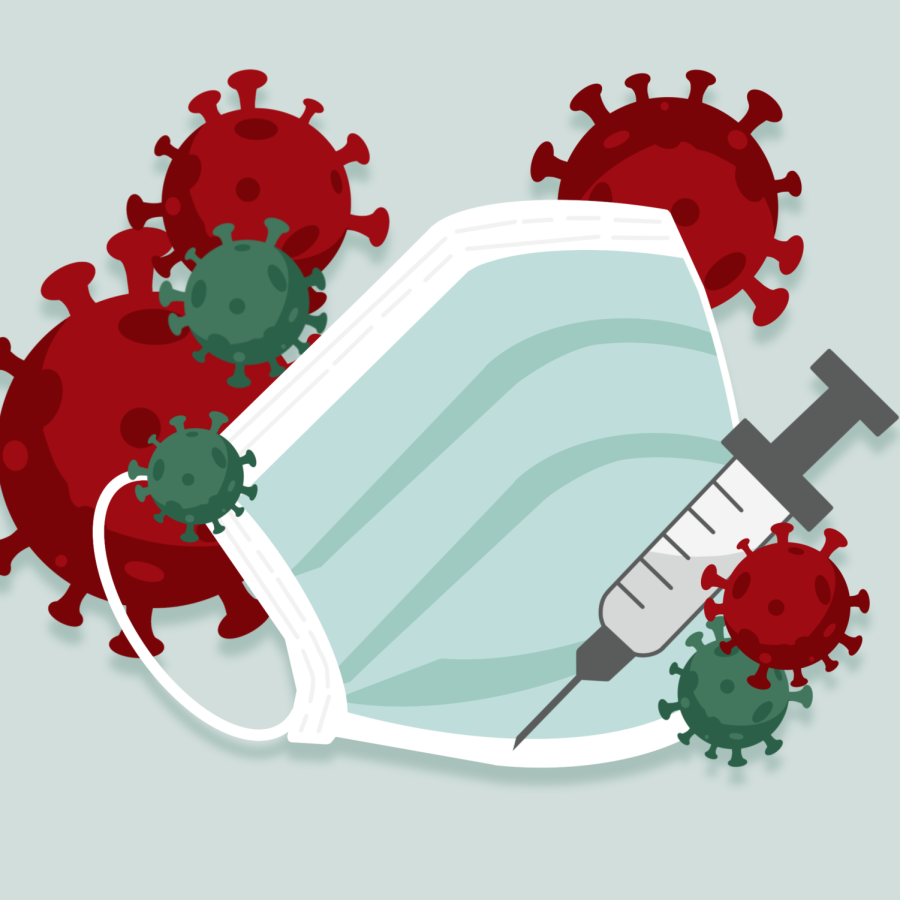COVID-19: What you need to know in 2022
January 18, 2022
Due to the recent surge in COVID-19 cases caused by the Omicron variant, San Antonio’s risk level — which takes into account factors like the city’s case numbers and positivity rate — has now been raised to severe.
Updated Mask Guidelines:
Amid the ongoing spread of the Omicron variant, the CDC now says that individuals might want to consider wearing an N95 or KN95 mask in high-risk areas, like crowded indoor settings, because these mask types provide the best protection against COVID-19. The CDC added that any masks worn should be a good fit and appropriately cover the nose and mouth.
Testing, Isolation and Quarantine:
The Biden administration announced on Friday that Americans can order up to four free COVID-19 rapid tests per household, starting Wednesday, Jan. 19.
The CDC has also recently updated its guidelines for isolation and quarantine. According to the CDC, anyone that tests positive for COVID-19 should isolate, while anyone who may have been exposed to COVID-19 should quarantine.
The CDC now recommends that anyone who has tested positive for COVID-19, regardless of vaccination status, stay at home for five days — after, it is safe to leave your house if symptoms have subsided. If fever persists, at-home isolation is recommended till the fever resolves.
After isolation, wearing a well-fitting mask for five additional days is still recommended when in the presence of people to minimize the spread of the virus.
The rationale behind this decrease in the isolation period to five days is that, according to the CDC, the transmissibility of the virus is highest in the early stages of infection. This period tends to be 1-2 days before the onset of COVID-19 symptoms and 2-3 days after symptoms have appeared.
If you are exposed to someone with COVID-19, quarantine guidelines vary depending on vaccination status. Detailed guidelines can be found on the CDC’s official website as well as on the UTSA website. The university also requires that any students, staff and faculty who have tested positive for COVID-19 report their results by submitting a COVID-19 Case Report.
Vaccination and Treatment:
COVID-19 vaccinations are still the recommended way to effectively prevent severe illness at this point in the pandemic. The CDC also recommends that, if eligible, you get boosted to improve immunity.
The Pfizer-BioNTech and Moderna vaccines are mRNA vaccines. They teach the body’s cells to make a harmless piece of the virus’ spike protein. This triggers an immune response in the body, equipping the body for any future infection.
However, the Johnson & Johnson vaccine is not a mRNA vaccine. It introduces a modified vector virus into the body, which instructs the body to create an immune response for protection against future infection.
While the CDC recommends getting the Pfizer-BioNTech or Moderna vaccine and their booster doses, the Johnson & Johnson vaccine is also an option.
The FDA has also granted Emergency Use Authorization for monoclonal antibody treatments. Monoclonal antibodies are laboratory-made and help the body’s immune system to recognize and respond to COVID-19 infection effectively. The treatments are administered at infusion centers and require a healthcare referral.
According to the FDA, the treatment can be administered to individuals who have tested positive for the virus and are at high risk for developing severe COVID-19. However, it is important to note that monoclonal antibody treatments are not a substitute for the COVID-19 vaccine.
The distribution and supply of the monoclonal antibody treatments is controlled by the federal government. As of Dec. 27, 2021, the state of Texas announced that it is running short on the only antibody treatment that is known to be effective against the Omicron variant.
The development of therapeutic drugs to treat COVID-19 is also underway.












